|
2014 concerts january 3, 4 & 5, 2014 - the san francisco tape music festival january 7, 2014 - chris newman january 17, 2014 - sfSound plays robert moran graphic scores @ thingamjigs january 21, 2014 - george cremaschi, katherine young, and sfSoundGroup january 25, 2014 - xenakis/scelsi/glass/cremaschi/etc january 29, 2014 - jack wright large ensemble february 11, 2014 - bonnie jones & andrea neumann / danishta rivero february 18, 2014 - natural artefacts w/ tim perkis :: lucie vítková march 11, 2014 - joan la barbara march 25, 2014 - travis andrews & ben kreith :: matt ingalls april 15, 2014 - green alembic / lanacane april 22, 2014 - the hub may 13, 2014 - john ingle's babylonian lottery may 27, 2014 - larry polansky / paul hoskin june 24, 2014 - chris brown - SFSOUND'S MICROFESTIVAL OF CONTEMPORARY PIANO MUSIC (I) june 25, 2014 - irene russo / tom djll's hackmidi - SFSOUND'S MICROFESTIVAL OF CONTEMPORARY PIANO MUSIC (II) july 8, 2014 - sfSound @ oakland uptown active music series - 50TH ANNIVERSARY OF TERRY RILEY'S "IN C" july 25, 2014 - sfSound @ old first concerts - ZORN/LIGETI/DAVIDOVSKY/RILEY/TUTSCHKU/BURNS aug 8, 2014 - sfSound @ yerba buena bay area now festival aug 24, 2014 - sfSound @ sfcm - STOCKHAUSEN/GRISEY/SMALL PACKAGES sep 27, 2014 - birgit ulher mit grosse abfahrt oct 14, 2014 - jonathan zorn oct 21, 2014 - MUSIC & FILM: a. lewandowski/t. feeney/c. shepard/l. polansky/d. kant & m. ashkin/b. o'brien nov 8, 2014 - nate wooley & carol robinson play eliane radigue nov 11, 2014 - tim hodgkinson & chris brown nov 18, 2014 - quadraphonic works: bhob rainey & stockhausen's gesang der jünglinge |
|
|
friday (8pm) :: saturday (two performances of same program: 7pm & 9:30pm) :: sunday (7pm)
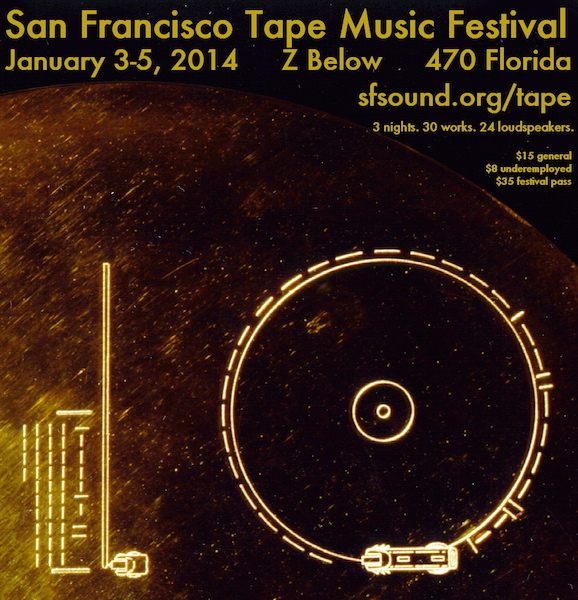
The San Francisco Tape Music Festival 2014 America's only festival devoted to the performance of audio works projected in three-dimensional space, The San Francisco Tape Music Festival features three distinct evenings of classic audio art and new fixed media compositions by 20 local and international composers. Hear members of the SF Tape Music Collective, along with guest composers, shape the sound live over a pristine surround system consisting of 24 high-end loudspeakers while the audience is seated in complete darkness. It's a unique opportunity to experience music forming - literally - around you. The 2014 Festival features classic works by François Bayle, Willem de Ridder with The Hafler Trio, Denis Smalley, Hildegard Westerkamp, and Iannis Xenakis. Other highlights include a recorded invocation from sound pioneer Alexander Graham Bell, Melodica, a rarely-heard tape-loop piece by Steve Reich from 1966, and a presentation of The Sounds of Earth, collaborative sound collage from Voyager's Golden Record, now traveling through interstellar space. In addition there will be pieces by international and local composers, including Jacob Felix Heule, Aaron Oppenheim, Maggi Payne, and Bruno Ruviaro, and a variety of premieres and established pieces by members of the San Francisco Tape Music Collective, Matt Ingalls, Cliff Caruthers, and Thom Blum. Visit the festival website for full program details. |
|
|
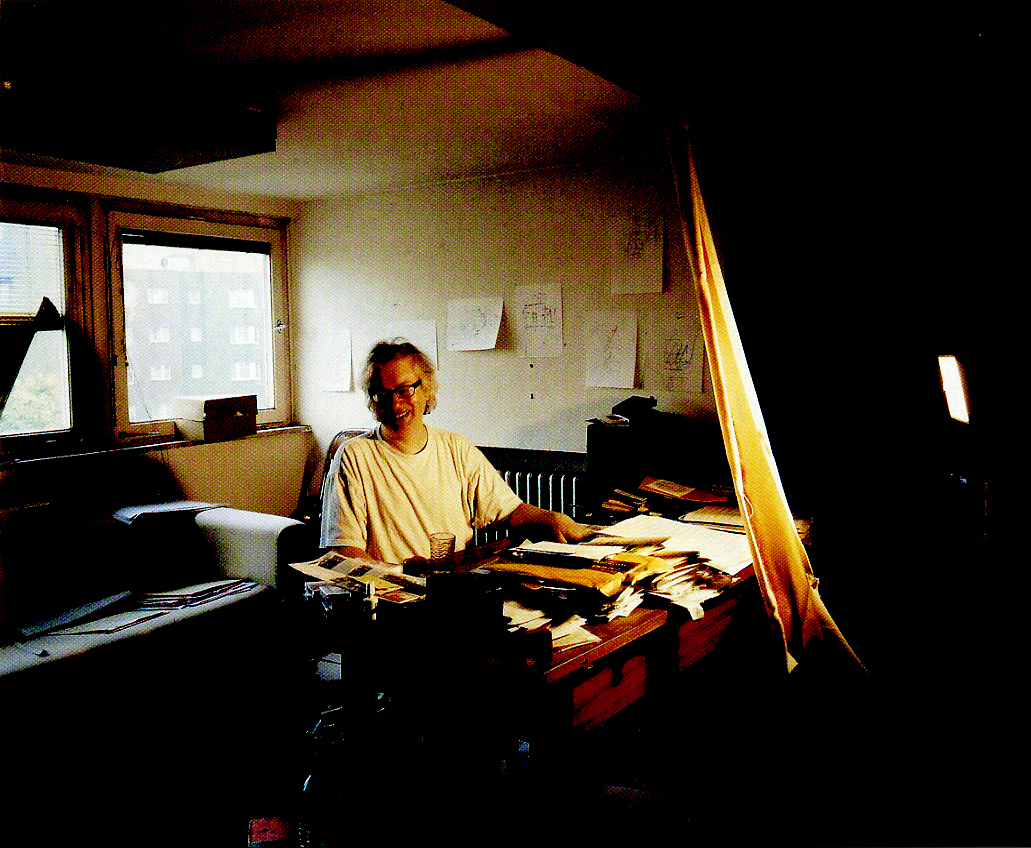 Chris Newman Chris Newman (*1958 London) is an experimental interdisciplinary artist using the medium of music, painting, video, drawing and literature. From 1976 to 1979 he studied music at King’s College London, taking a Bachelor of Music. During this time he met the Russian poet Eugene Dubnov and started to translate Russian poets (Osip Mandelstam, Velimir Khlebnikov), this process of translating proving important for his later work (e.g. from one medium to another / from life to art). He moved to Cologne, Germany, in 1980 to study with Mauricio Kagel (New Music, Theatre / Video) at the Hochschule für Musik Köln. First public performance singing own songs in 1982. He founded chamber-punk rock band Janet Smith in 1983; met Morton Feldman in 1984. First concerts and video showings: Institute of Contem-porary Arts, London; Theater am Turm, Frankfurt; Kölnischer Kunstverein, Cologne; Cooper Union, New York. He started to paint in 1989, having his first painting exhibition in 1990 with Galerie Poller, Frankfurt a.M., which led (from 1994) to the two medium installations. These installations have been presented at (among other places): Kunstverein für die Rheinlande und Westfalen, Düsseldorf, (1994); Nationalgalerie im Hamburger Bahnhof, Berlin, (1999); Kolumba - Diözesan Museum, Cologne, Donaueschinger Musiktage; Limelight Kortrjk; Musée d'Art Moderne, Strasbourg, Arp Museum Rolandseck, Goethe-Institut Budapest. His paintings and drawings are represented in the Diözesan Museum, Cologne, Neue Museum, Nuremberg, as well as in the Neue Museum Weserburg, Bremen, and Hamburger Bahnhof, Berlin. Since the beginning of the 80's Newman's music pieces have been performed at concerts and festivals and re-corded for radio productions (also orchestral commissions, e.g. BBC, Hessischer Rundfunk). These include songs, piano pieces and two piano concertos. He has published books of poetry and prose and issued a number of CDs, his latest one 'Piano Sonatas' with Mode Records, New York. After the first phase in Cologne, he lived in Paris, London, again in Cologne and now in Berlin. MUSICIANS Chris Newman, voice Hadley McCarroll, piano Brendan Lai-Tong, trombone Benjamin Kreith, violin Matt Ingalls, clarinet Mark Clifford, marmba Luciano Chessa, piano |
|
|

sfSound plays graphic scores by Robert Moran Members of Thingamajigs Performance Group (TPG) and sfSound join forces to perform works of Robert Moran. A new work entitled “Within A Day” will be created in a collaborative manner between Robert Moran and TPG, to be premiered at the concert. This concert is the culmination of a working residency between esteemed American composer Robert Moran (b. 1937) and the Thingamajigs Performance Group. In January, Moran will be in San Francisco to direct TPG in creating a group collaborative musical work that blurs divisions between the role of composer and performer. Along with the premiere of “Within A Day”, sfSound will perform some of the early graphic scores by Moran. SFSOUND MUSICIANS Monica Scott, cello Hadley McCarroll, piano Benjamin Kreith, violin John Ingle, saxophone Matt Ingalls, clarinet Tom Dambly, trumpet |
|
|
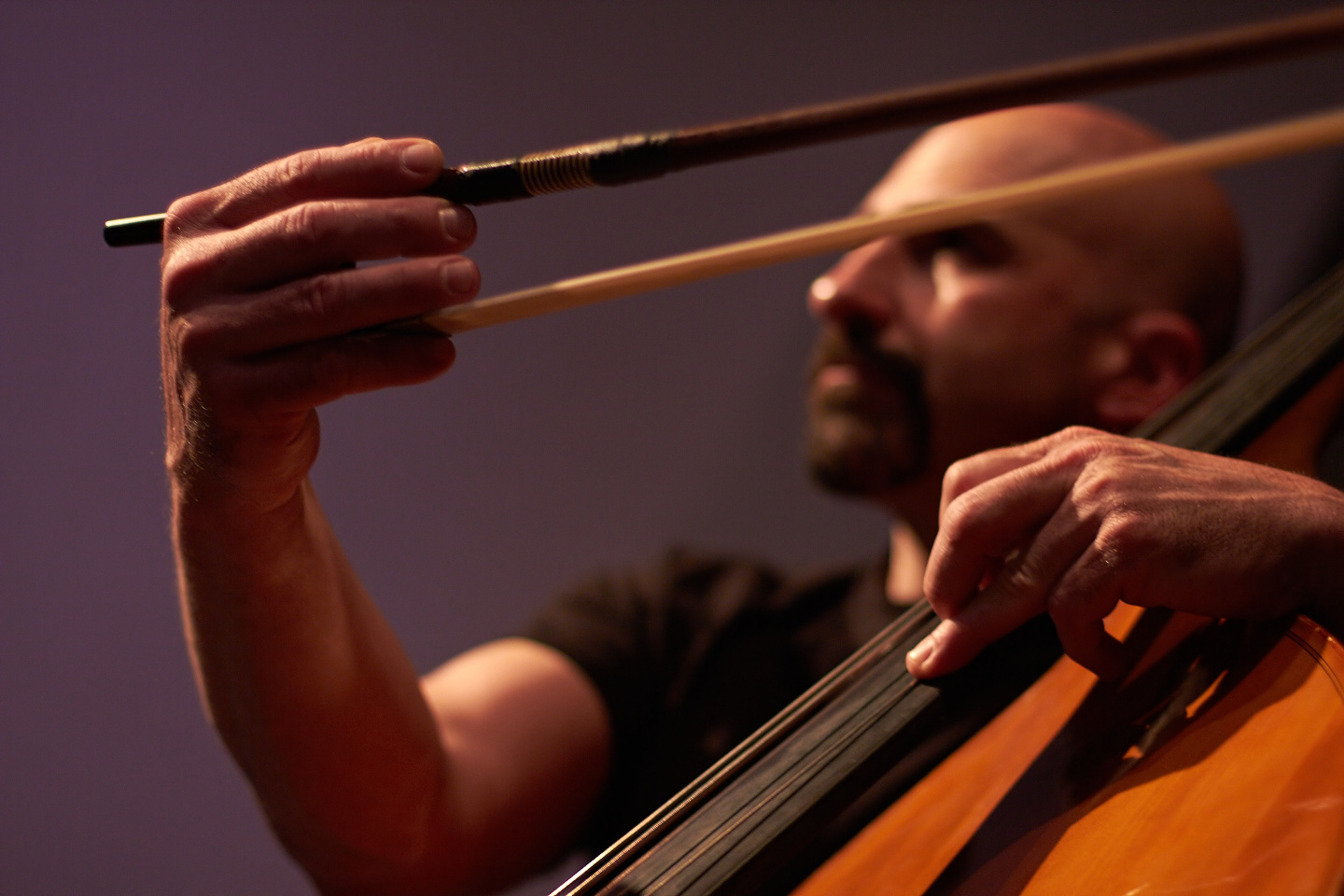
 George Cremaschi, Katherine Young, and sfSoundGroup perform solo and group improvisations George Cremaschi works as a composer, performer, teacher and organizer. Using mostly contrabass and electronics, and working with free improvisation and a wide variety of non-idiomatic compositional approaches and techniques, his work attempts to dissolve the boundaries between music, sound art and noise, and extend their existing language, vocabulary and discourse. He has worked with, and composed for, a long list of distinguished improvisers, dancers and choreographers, installation artists, poets, filmmakers, folk musicians, theater groups, orchestras, rock bands and pop divas. Some of his current projects include the bands KRK (w/Matthew Ostrowski), Rohr Rohr (w/dieb13 and Gino Robair), Los Amargados (w/Petr Vrba), Lambs Gamble (w/Fritz Welch and Eric Boros), and a trio with Lê Quan Ninh and Frédéric Blondy. He is also the co-founder and director of Pražský Improvizační Orchestr (PIO), a 15-member group working with conducted and free improvisation, and graphic scores. As an interpreter, he has performed works by many composers including Andriessen, Braxton, Cage, Cardew, Feldman, Mingus, Oliveros, Penderecki, Tenney, Xenakis, etc, and has appeared on over 40 recordings on the Apestaartje, Beak Doctor, Black Saint, Emanem, Evander, Evolving Ear, Leo, Music & Arts, Nine Winds, Rastascan and 482 Music labels. Born in New York where he studied music and composition, he lived for many years in California and currently lives in Prague, Czech Republic. Composer and bassoonist Katherine Young creates acoustic and electro-acoustic music that has been described by the New York Times as “raw, wailing, coloristic,” and New Music Box has noted “her visceral approach to sound; her organic use of repetition, structure, and pacing; her attentiveness to the smallest details of timbre; her adventurousness in using instruments in unexpected ways.” Talea Ensemble, Flux Quartet, the String Orchestra of Brooklyn, Spektral Quartet, Till by Turning, and others have performed her music, and Katherine has documented her work on numerous recordings. Her 2009 solo bassoon release garnered praise in The Wire (“Bassoon colossus”) and Downbeat (“seriously bold leaps for the bassoon”). About her 2012 release with her quartet Pretty Monsters, All About Jazz stated: “one of the most intriguing ensemble debuts in recent memory, a sonically audacious record documenting the development of a bold young artist whose arresting improvisations are as remarkable as her engaging compositions.” Cremaschi and Young will be joined by local musicians: Monica Scott, cello Gino Robair, electronics Benjamin Kreith, violin John Ingle, saxophone and Matt Ingalls, clarinet |
|
|
click here for advance ticket purchase :: tickets can also be purchased at the door CASH ONLY


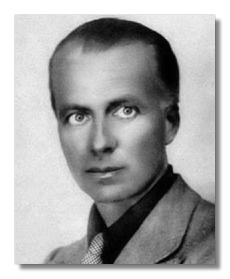 sfSound Plays a Ton of Great Music sfSoundSeries returns to the San Francisco Conservatory with an exciting program combining new and recent works with 20th-century classics. In Giacinto Scelsi's Kya (1959) (featuring sfSound's clarinetist, Matt Ingalls), all notions of melody and harmony, dissonance and consonance are tossed out the window, leaving only vibration and sound itself. The oldest work on the program, it is surprisingly modern sounding, even after 55-years! Iannis Xenakis's Anaktoria (1968) for 8 musicians explores a wide range of unusual sonorities, from beautiful sustained textures to harsh "scrubbing" on the bridge of string instruments, clarinet overblown multiphonics, and "sickly" sounding glissando passages. The title is said to be the name of Sappho's lover, and certainly, there is a raw beauty in this music that exudes from the timbral sonorities, from the nature of the instruments themselves. Philip Glass's Two Pages (1969) is one of the composer's most minimal works. Using only 5 pitches, Glass uses his patented "additive process" to create an ever-changing 20-minute piece that is surprisingly dramatic. Performed by the entire sfSoundGroup, expect plenty of circluar-breathing from the wind players! A long-time resident of the Bay Area now living in Prague, composer/contrabassist George Cremaschi leads a new work written especially for sfSoundGroup. Using techniques from free improvisation, his work attempts to dissolve the boundaries between music, sound art, and noise -- extending their existing language, vocabulary and discourse. The program also features Polish composer Wojciech Widłak's All my Angers (2013) for cello and piano and an improvisation by sfSoundGroup. PROGRAM Iannis Xenakis - Anaktoria Giacinto Scelsi - Kya Philip Glass - Two Pages Wojciech Widłak - All my Angers George Cremaschi - New Composition sfSoundGroup - Improvisation MUSICIANS Monica Scott, cello Ellen Ruth Rose, viola Kjell Nordeson, percussion Hadley McCarroll, piano Brendan Lai-Tong, trombone Benjamin Kreith, violin John Ingle, saxophone, garden hose, conductor Matt Ingalls, clarinet Tom Dambly, trumpet George Cremaschi, bass Mark Clifford, vibraphone Armando Castellano, horn Jesse Canterbury, bass clarinet Kyle Bruckmann, oboe/english horn |
|
|
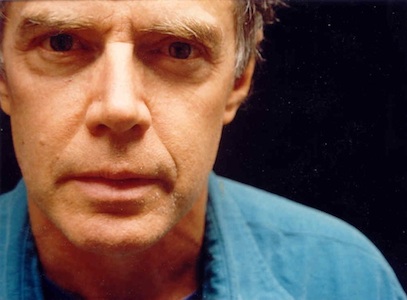 Jack Wright Large Ensemble Saxophonist Jack Wright's Limited Sedition release, “Eight by Nine” (2000) - featuring a large ensemble of local improvisers - has been hailed as "one of American reductionism's landmark recordings" by Dan Warburton (Paris Transalantic). For this concert, Wright assembles an ensemble of like-minded bay-area improvisers and his son and touring partner, Ben Wright (Taos, NM) in what should be a meeting of similar historic proportions. MUSICIANS Jack Wright (saxophones) Ben Wright (bass) Bob Marsh (cello) Matt Ingalls (clarinets) Jacob Felix Heule (percussion) Ron Heglin (trombone) Tom Djll (trumpet) Doug Carroll (cello) Mia Bella D’Augelli (violin) Kristian Aspelin (guitar) Jack Wright is either a very serious musician or else, uninterested to carry that burden, he could hardly be considered serious at all. In the eighties he called himself "non-commercial, not interested in the marketplace," what today is known as diy. His wide vocabulary comes from reaching out as widely as possible for new experience, and playing with anyone who asks. He seeks to know his music as if for the first time, rather than demonstrating a pre-constructed and self-approved aesthetic. He is motivated to put his love of playing in front of people. Jack has been a full-time saxophonist of improvisation since 1979, though he began playing as a ten-year-old in 1952. He quit, basically because he couldn't play chord-change jazz. In the long hiatus that followed he studied and reflected on history, philosophy, culture, which he continues to do. He taught and quit that, engaged in radical politics and quit that when the left lost its revolutionary edge, began playing again as a free improviser. He has been regularly discouraged but has not stopped. Now he is known to a few people and seeks to keep the low profile, which is the easy way to go, business-wise. He used to rage and stomp around like a Dionysian; now he can make soft and squeaky sounds, mixed with occasional lion roars and dog barkings. He wears shorts, a beard, long hair, and a hat. He mostly sits crouched down, with the bell of his horn pressed against his bare thigh and muted sometimes into silence. He plays in public only with people who interest him musically and personally, but that's still a lot of people, since he plays a lot of different ways, from free jazz to nothing recognizable as saxophone music. He may be obscure but he comes close to doing exactly what he wants in his life, and that is no simple matter for any of us. |
|
|

 Bonnie Jones & Andrea Neumann duo and Danishta Rivero solo a copresentation with 23five Bonnie Jones is a Korean-American writer, improvising musician, and performer working primarily with electronic music and text. Born in 1977 in South Korea she was raised by dairy farmers in New Jersey, and currently resides in Baltimore, MD. Bonnie creates improvised and composed text-sound performances that explore the fluidity and function of electronic noise (field recordings, circuit bending) and text (poetry, found, spoken, visual). She is interested in how people perceive, "read" and interact with these sounds and texts given our current technological moment. Bonnie has received commissions from the London ICA and has presented her work in the US, Europe, and Asia and collaborates frequently with writers and musicians including Ric Royer, Carla Harryman, Andy Hayleck, Joe Foster, Andrea Neumann, Liz Tonne, and Chris Cogburn. She received her MFA at the Milton Avery School of the Arts at Bard College. Born 1968 in Freiburg, Andrea Neumann studied classical piano at the Hochschule der Künste, Berlin and has been active primarily as musician and composer in the fields of new music and experimental music since 1994. She has been significantly involved in the formation and development of the "echtzeitmusik" scene in Berlin, which borders on fields as varied as noise, electronica, contemporary composed music, performance, and sound art. She has co-organized “Labor Sonor,” a series for experimental music, film and performance in Berlin since 2000. Her exploration of the piano for new sound possibilities has led her to reduce the instrument to its strings, its resonance board and the cast-iron frame. Playing this unmounted 'leftover' of a piano, with the help of electronics to amplify and manipulate the sound, she has developed several of her own playing techniques, sounds, and ways for preparing the instrument. She has engaged in intensive cooperations in the mixed border areas between composition and improvisation, between electronic and hand-made music, between instrumental and performative music with ensembles like "Les Femmes Savantes", "Phosphor" and with musicians like Sophie Agnel, Burkhard Beins, Sabine Ercklentz, Bonnie Jones, Annette Krebs, and Hanna Hartman. Concert and festival performances in Europa, USA, Canada, Mexico, Argentina, Russia, Australia and Japan In 2008 she was a fellow at Villa Aurora in Los Angeles. In 2008, she received an honorary mention by Prix Ars Electronica for her piece Videobrücke Berlin-Stockholm, a collaboration with Sabine Ercklentz. Danishta Rivero is a musician and sound artist who resides in San Francisco. She performs solo improvisations on the Hydrophonium, a water-based electro-acoustic percussion instrument. Danishta also does vocals and digital processing in Blood Wedding, a just intonation noise duo with Chuck Johnson on steel guitar and modular synth. Through the years, she has been involved in various music projects. Most notably, she was lead vocalist of progressive metal band Aghora (1997-2006), and she co-founded Optiphonal Wonder Machine, a multimedia collaboration with Jennifer Rannells. |
|
|
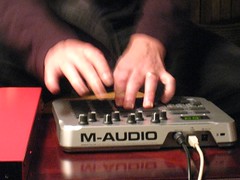
 Natural Artefacts (with Tim Perkis) and Lucie Vítková Two sets by visiting european artists: Natural Artefacts (Susanna Lindeborg piano, computer; Ove Johansson tenorsax, computer; and Per Anders Nilsson computer, electronics) from Gothenburg, Sweden, made its start from collaboration over several years between the composer Per Anders Nilsson and the musicians Susanna Lindeborg and Ove Johansson. The trio is developing a concept where the computer and electronics act as a completely integrated musical instrument. The sound is a unique mix between live electronics, jazz, impro and new music. Here they collaborate with Tim Perkis on electronics. Lucie Vítková is a composer, performer and improviser of accordion, harmonica, voice and dance from the Czech Republic. She graduated in accordion performance at Brno Conservatory in 2010 and composition at Janáček Academy of Music and Performing Arts in Brno (CZ) in 2013. During her Master Degree, she studied at Royal Conservatory in The Hague (NL) and at California Institute of the Arts in Valencia (USA). She has studied with Martin Smolka, Jaroslav Šťastný, Martijn Padding, Gillius van Bergijk and Michael Pisaro. She is member of the Ensemble Marijan, Dunami, Dust in the Groove and Prague Improvisation Orchestra. For this concert, Vítková will perform solo and group improvisations and compositions with sfSound members Benjamin Kreith, John Ingle, and Matt Ingalls. |
|
|
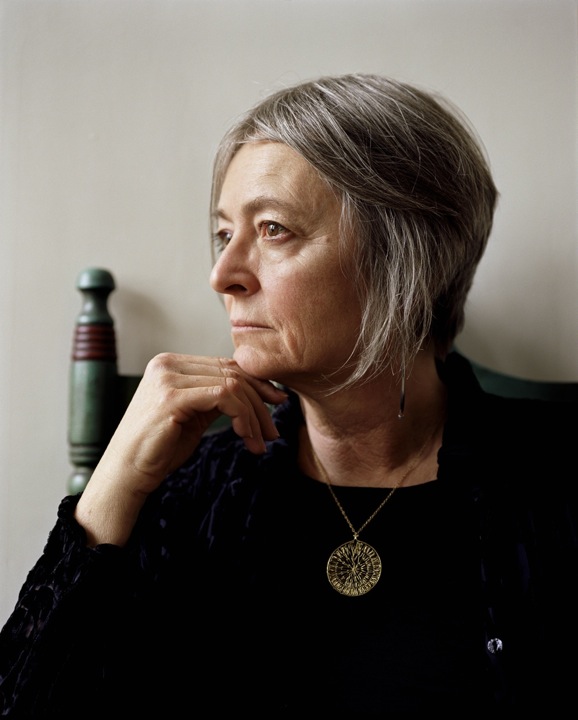 Joan La Barbara |
|
|
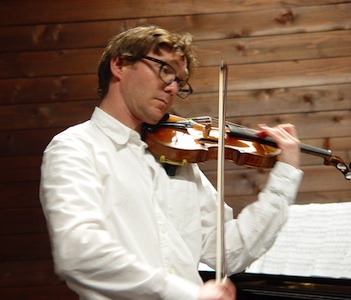

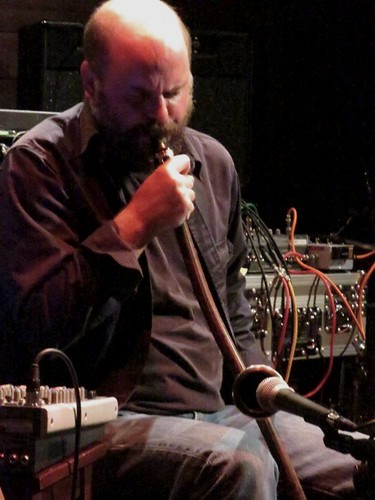 Benjamin Kreith & Travis Andrews Duo Matt Ingalls Solo Benjamin Kreith and Travis Andrews perform the West Coast premier of Jardín bajo la luna by David del Puerto, a Spanish composer/guitarist who continues to hone his personal, understated modal language. His new duo is a Schumannesque suite of night landscapes — a pathway through storms, fireflies, and still waters. Also on the program, Carlo Prosperi’s nighttime duo, In nocte, and solo pieces by Elliott Carter and Örjan Sandred. Matt Ingalls performs his decades-in-the-making, 30-minute-continuous-micro-timbre-circular-breath-tour-de-force clarinet solo that explores extended techniques that interact with the acoustic space. Travis Andrews toured nationally and internationally with several bands before completing his Bachelor of Music degree at the University of Wisconsin and his Master’s of Music at the San Francisco Conservatory of Music under David Tanenbaum, where he received the conservatory’s 2009 awards for Outstanding Guitarist and Outstanding Jazz Improviser. He is a two-time Bang on a Can Fellow and has been a featured soloist with Los Angeles Philharmonic, as well as with the San Francisco Contemporary Music Players. He also plays with the Left Coast Chamber Ensemble, Eco Ensemble in residence at the University of California, Berkeley, and Empyrean Ensemble in residence at University of California, Davis. He is currently active with the bands Freighter, miRthkon, Makeunder, and The Living Earth Show, a chamber duo that commissions new music. Travis is a founding faculty member at the Marin Community Music School. He has also taught master classes for the Guitar Foundation of America, The Colburn School in Los Angeles, the Cornish College of the Arts in Seattle, Washington, and Western Washington University. His publications include the co-authored book The Beginner's Guide to Guitar from String Letter Publishing, and he is a contributor to Acoustic Guitar Magazine. Violinist Benjamin Kreith has premiered solo works at the Strasbourg and Marseille festivals, given recitals in Madrid and New York City, and performed as a guest artist with the Ying and Muir Quartets. Ben helped to found the Ensemble CGAC in Santiago de Compostela, and has also played with Barcelona 216 and the Harvard Group for New Music. For several years he was a member of the Cascade Quartet and concertmaster of the Great Falls Symphony. His solo recordings include works by Christian Lauba on the Accord/Universal label and by Luciano Chessa, forthcoming on Stradivarius. Reviled for his “shapeless sonic tinkering” by the Los Angeles Times, Oakland musician Matt Ingalls is a composer, clarinetist, concert producer, and computer music programmer. Often incorporating elements of improvisation, his music is heavily influenced by his long involvement in computer music. His composerly solo improvisations explore extended clarinet techniques that interact with the acoustic space, often as combination tones. Matt is the founder and co-director of sfSound, a new music series, ensemble, and internet radio station devoted to new ideas and traditions of experimental music, performance art, live electronic music, Bay Area composition, and the various facets of contemporary improvisation. |
|
|
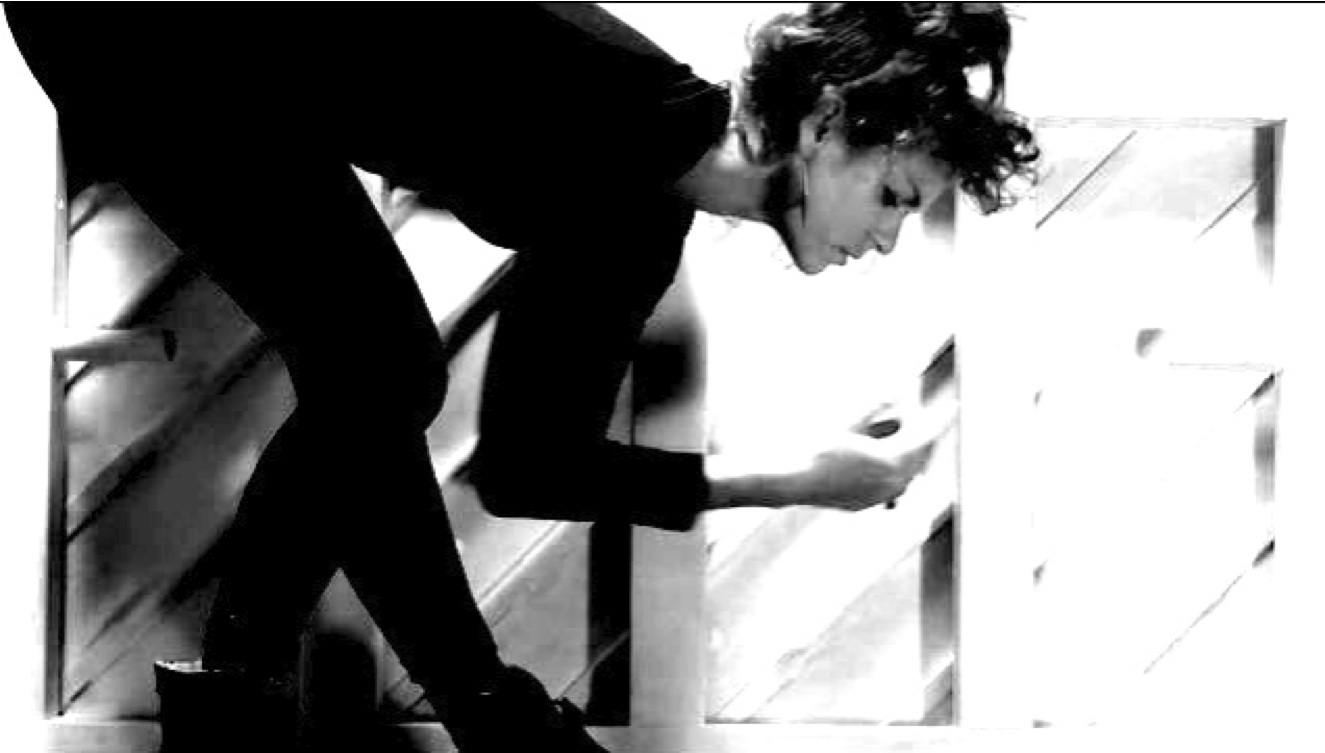

Lanacane & Green Alembic LANACANE is the solo electronic music project of Lana Voronina, multi-media visual artist, performer, and event producer. Expect to hear piano improvisation, samples, effects, and beats. GREEN ALEMBIC is an eight piece improvisational chamber super-group of accomplished bay area musicians. Performing to original images and spoken word, the group’s aesthetic is focused upon the immediate creation of musical ideas, clear articulation, and sensitivity to the unfolding sonic and visual environment. Instrumentalists include Christina Stanley violin, Doug Carroll cello, Jason Hoopes contra bass, Joe Lasqo piano, Michael Cooke bassoon & sheng (Chinese free reed instrument), Jim Ryan flute, amplified kalimba, spoken word, & original graphic art, Jeff Hobbs violin, alto clarinet & cornet, Ron Heglin trombone & voice. M U S I C I A N S Doug Carroll is a cellist and composer living in the Bay Area. His solo improvisations have received international acclaim for their stark originality and musical sensitivity. He has composed for a variety of multimedia events, including modern dance, theatre, film, and video, as well as collaborations with visual artists. He studied composition with Karlheinz Stockhausen, Lou Harrison, and Anthony Braxton. He received his MFA in Electronic Music and Recording Media from Mills College. Michael Cooke is a multi-instrumentalist, improviser, composer of jazz and classical music. He plays a variety of instruments -- saxophones, fluteS, soprano and bass clarinets, and has a deep relationship with the bassoon. Recently he has incorporated the Chinese ‘sheng,’ a free reed instrument, into this arsenal. He is a cum laude graduate with a music degree from the University of North Texas. Ron Heglin is a trombonist and vocalist working with extended technique on the trombone and with spoken and sung imaginary languages. His voicing has been influenced by his study of North Indian vocal music. He works both compositionally and in an improvisational mode. He has been a member of the Bay Area music context for over twenty-five years and has performed internationally. Jeff Hobbs is an Oakland resident, instrument repair artist at ‘Best Instrument Repair’ on 14th St. in downtown Oakland, and a ubiquitous presence on the improv, poetry slam, and outlandish Eastbaynia rock and r&b scenes. He plays violin, doublebass, cornet, various clarinets as well as several other instruments. Jason Hoopes is a bassist and composer from Oakland. He can be seen performing with Jack O' The Clock, Fred Frith Trio, Eat The Sun, Dominique Leone, John Ettinger, Sarah Wilson, John Schott, Rova Sax Quartet, and numerous others. Jason also works in dance, composing music for choreographers Peiling Kao, Molissa Fenley, and Alyce Finwall among others. Joe Lasqo has come to the Bay Area experimental music world via a wandering path that has led through classical music studies in India, jazz studies in smoke-filled bars, computer music studies at MIT, Columbia, & Berkeley CNMAT, & living (and listening) for years in several Asian countries. He plays piano/keyboards, percussion, and Max/MSP as a solo performer and in collaboration with other musicians, musical groups, and instrument-inventors. Jim Ryan has been performing, producing, and curating shows in Oakland and S.F. since 1997. He is a musician, painter, and writer. Previously he lived and worked in Paris, France (The Free Music Formation) and Washington, DC (The Art Performance Group). During his time in Paris, he played for over a year in the weekly jam sessions conducted by the late soprano saxophonist Steve Lacy. Christina Stanley is a bay area based violinist, composer, vocalist and artist. She is active as a performer, improviser, electronic musician and teacher. She has performed in Europe, the continental US, and Cuba as a vocalist, violinist and electronic musician. She has played SF MOMA and has premiered works by Roscoe Mitchell under conductor Petr Kotik. |
|
|
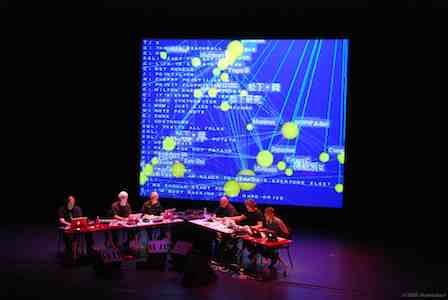
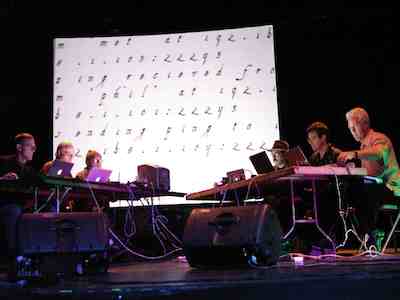 The Hub A rare opportunity to hear the band that pioneered laptop ensembles over twenty-five years ago. Functioning in the West Coast tradition of composer as instrument builder — redefining music from the ground up -- The Hub makes music using electronic and digital systems of their own devising. Producing some of the most imaginative and compelling electronic music ever made, The Hub is perhaps the most infamous electronic ensemble since Musica Elettronica Viva. Although this influential Bay Area collective has performed worldwide in recent years and continues to break new ground in the ever-growing laptop medium, they had not played in San Francisco for almost a decade. Formed in 1986, The Hub members are John Bischoff, Tim Perkis, Chris Brown, Scot Gresham-Lancaster, Mark Trayle and Phil Stone, with guest Matt Ingalls. The Hub grew from the League of Automatic Music Composers: John Bischoff, Tim Perkis, Jim Horton, and Rich Gold. Perkis and Bischoff modified their equipment for a performance at The Network Muse Festival in 1986 at The LAB in San Francisco. Instead of creating an ad-hoc wired connection of computer interaction, they decided to use a hub - a general purpose connection for network data. The Hub was the first band to do a telematic performance in 1987 at the Clocktower in New York. Since this work represents some of the earliest work in the context of the new live music practice of Networked music performance, they have been cited as the archtypal network ensemble in computer music. The Hub's best-known piece, Stuck Note by Scot Gresham-Lancaster has been covered by a number of network music bands, including MiLO- the Milwaukee Laptop Orchestra and BiLE- the Birminham Laptop Ensemble. They have collaborated with Rova Saxophone Quartet, Nick Collins, Phil Niblock and Alvin Curran. They currently perform around the world after a multi-year hiatus, ending in 2004. |
|
|
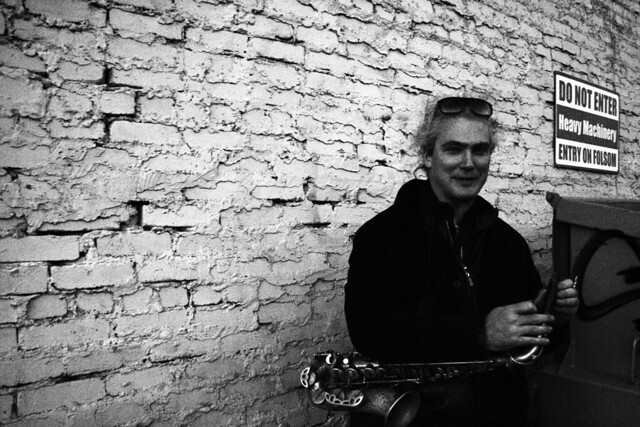 John Ingle's Babylonian Lottery sfSound saxophonist/improviser/composer John Ingle in a concert of his "Babylonian Lottery", a game piece for improvisers that incorporates both composed and improvised music. Expect a wide range of musical expression, from tiny sounds and pristine textures to orchestral blasts and free-jazz blowouts. Within the "lottery" will be solos by the composer, duo Ing with Matt Ingalls, and a jazz quartet with special guests Lisa Mezzacapa, Vijay Anderson, and John Finkbeiner. The smaller groups' music will be interpolated/exterpolated by sfSoundGroup and guests Jordan Glenn, Mark Clifford, and Tim Perkis. M U S I C I A N S John Ingle, saxophones, voice Monica Scott, cello Tim Perkis, electronics Lisa Mezzacapa, contrabass Hadley McCarroll, piano Brendan Lai-Tong, trombone Benjamin Kreith, violin Matt Ingalls, clarinet John Finkbeiner, electric guitar Tom Dambly, trumpet Mark Clifford, vibraphone Kyle Bruckmann, oboe/english horn Vijay Anderson, drums Jordan Glenn, percussion |
|
|
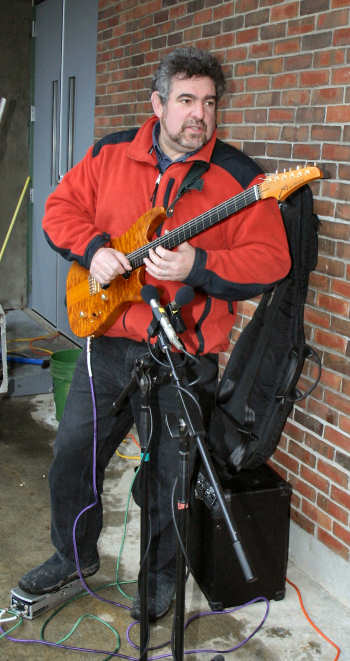
Larry Polansky & Paul Hoskin Recently relocated to Santa Cruz, composer/guitarist Larry Polansky presents recent work, including the premiere of Approaching the Azimuth for solo clarinet written for Matt Ingalls. The program also includes works for solo guitar; Tetherball for six players; Catchaiku, a non-coincident canon for oboe and clarinet, and new structured and free improvisations with sfSound. From Seattle, improvisor Paul Hoskin performs a solo on the always-fascinating contrabass clarinet and joins Polansky and sfSound in free improvisations. M U S I C I A N S Larry Polansky, electric guitar Paul Hoskin, contrabass clarinet Brendan Lai-Tong, trombone Benjamin Kreith, violin John Ingle, saxophone Matt Ingalls, clarinet Tom Dambly, trumpet Kyle Bruckmann, oboe/english horn Larry Polansky (b. 1954) is a composer, theorist, teacher, writer, performer, programmer, editor and publisher. He lives in Santa Cruz, California, teaching at UC Santa Cruz. He is also the Emeritus Strauss Professor of Music at Dartmouth College, and co-director and co-founder of Frog Peak Music. His five solo CDs are available on New World Records, Artifact, and Cold Blue, and his music is widely anthologized on many other labels. His own works are performed frequently around the world. From 1980-90 he worked at the Mills Center for Contemporary Music, where he was one of the co-authors (with Phil Burk and David Rosenboom) of the computer music language HMSL, and a contributor to the widely-used program SoundHack (by Tom Erbe). His articles are published widely in journals such as Perspectives of New Music, the Journal of Music Theory, the Computer Music Journal, the Musical Quarterly, Leonardo and the Leonardo Music Journal (of which he was the founding editor), as well as many other publications. He is the editor of around 20 the scores of Johanna Magdalena Beyer, as well as scores by Ruth Crawford Seeger and others. In 2004, at the request of Crawford Seeger’s estate, he completed and edited her major monograph The Music of American Folk Song (published by the University of Rochester Press). His writings on American music include works on James Tenney, Crawford Seeger, Lou Harrison, Beyer, and many others. He is also the co-author of Music and Computers, a web-text published by Key Publications. He is the recipient a number of prizes, commissions, and awards, including Guggenheim, Fullbright, and Mellon New Directions Fellowships, as well as the inaugural recipient (with David Behrman) of the Henry Cowell Award from the American Music Center. As a performer, primarily as a guitarist and mandolinist, he has premiered and recorded a number of important contemporary works, by Christian Wolff, James Tenney, Lou Harrison, Lois V Vierk, Ron Nagorcka, Daniel Goode, David Mahler, and many others. He has been a member of many contemporary music ensembles, including serving as the curator for the Downtown Ensemble for a number of years, and as one-third of Trio (with Kui Dong and Christian Wolff) for over a decade. In 2010, he wrote the score for Stacey Steers’ Night Hunter, an experimental animation which was chosen for the Telluride, Sundance, Rotterdam, and other film festivals, and selected for the New York New Films/New Directors festival at Lincoln Center. Currently he is working on an edition of James Tenney’s collected theoretical writings, a series of articles about poetry and performance in American Sign Language. Paul Hoskin began playing contrabass clarinet in the summer of 1985. Utterly self-taught, his reed playing life started in the fall of 1980—c melody saxophone, then clarinet, and the bass clarinet exclusively by the spring of 1981. Baritone saxophone added in the spring of 1984. Hoskin performs (and performed) extensively throughout the United States and Europe. Paul’s solo oeuvre is initiated in Seattle June 1986. The fall of 1986 finds himself in Eastern Europe—seven solo performances in twelve days. As solo language develops, Hoskin begins the extended contrabass clarinet work. Ninety minutes continuosly (a switch of technology commands its current eighty minute form). The growth and definition of his solo work is part and parcel of the decade of music life in New York City (1986-1995). Three different ensembles (The Same, Trigger, Dierker/Meehan/Hoskin) provided Hoskin with musics of many sorts. Paul’s life as an organizer for an improvised music community is also shaped. Seattle is returned to in 1996. And, solo language, multiple creative ensemble work, endless ad hoc meetings are resuscitated. Different people, different coast. A brief stay in Astoria, Oregon (2006-2009) reinvigorated the organizer chunk of his work. And, fortunately, the Oregon chapter managed to put Paul in touch with the Bay Area creative music world. |
|
|
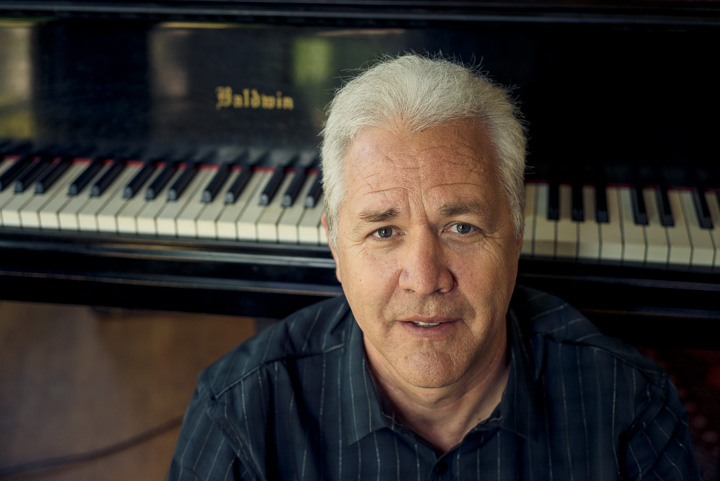 SFSOUND'S MICROFESTIVAL OF CONTEMPORARY PIANO MUSIC (I) Chris Brown Chris Brown premieres 6Primes, his new suite for piano solo in 13-limit just intonation. sfSound members perform the premiere of Brown's Ragamala Chiaroscuro II, a tuning-based trio based on an evolving chord. 6Primes is a new suite for solo piano retuned in 13-limit "just" intonation. The six primes are 2, 3, 5, 7, 11, and 13. Western music is based on the first three, 7 is familiar from blues chords, 11 produces quarter-tones, and 13 may be well known only to fans of Harry Partch's music. The six pieces each use a different set of four of these primes to control all the elements of their musical structure -- tuning, harmony, melody, rhythm, form. These modes evoke moods ranging from soothing to jangled, clear to cloudy, static to implacably driving. Each prime gets equal time and attention within about 45 minutes of music, demonstrating that there is no clear division between consonance and dissonance, only a continuum between simplicity and complexity, with unique character at every point within the scale. The concert begins with another premiere, a trio of modes and improvisations in 7-limit just intonation, for oboe, bass clarinet, and alto saxophone performed sfSound members John Ingle (alto saxophone), Matt Ingalls (bass clarinet), and Kyle Bruckmann (oboe) perform Ragamala Chiaroscuro. CHRIS BROWN, composer, pianist, and electronic musician, creates music for acoustic instruments with interactive electronics, for computer networks, and for improvising ensembles. Collaboration and improvisation are consistent themes in his work, as well as the invention and performance of new electronic instruments. These range from electro-acoustic instruments ("Gazamba", 1982), to acoustic instrument transformation systems ("Lava", 1992), and audience interactive FM radio installations ("Transmissions", 2004, with Guillermo Galindo). As a performer he has recorded music by Henry Cowell, Luc Ferrari, José Maceda, John Zorn, David Rosenboom, Larry Ochs, Glenn Spearman, and Wadada Leo Smith; as an improvisor he has recorded with Anthony Braxton, Pauline Oliveros, Fred Frith, Rova Saxophone Quartet, Ikue Mori, Alvin Curran, William Winant, Biggi Vinkeloe, Don Robinson, and Frank Gratkowski, among many others. Recent recordings of his music include "ROGUE WAVE" (on Tzadik), "TALKING DRUM" (on Pogus), a duet with Fred Frith titled "CUTTER HEADS" (on Intakt), and "SUSPENSION", with the CBD Trio, on Rastascan. He is also a member of the pioneering computer network band "The Hub", which has just released"BOUNDARY LAYER"a box set recording celebrating over 20 years of music on Tzadik. He is also a Professor of Music and Co-Director of the Center for Contemporary Music (CCM) at Mills College in Oakland, California. |
|
|
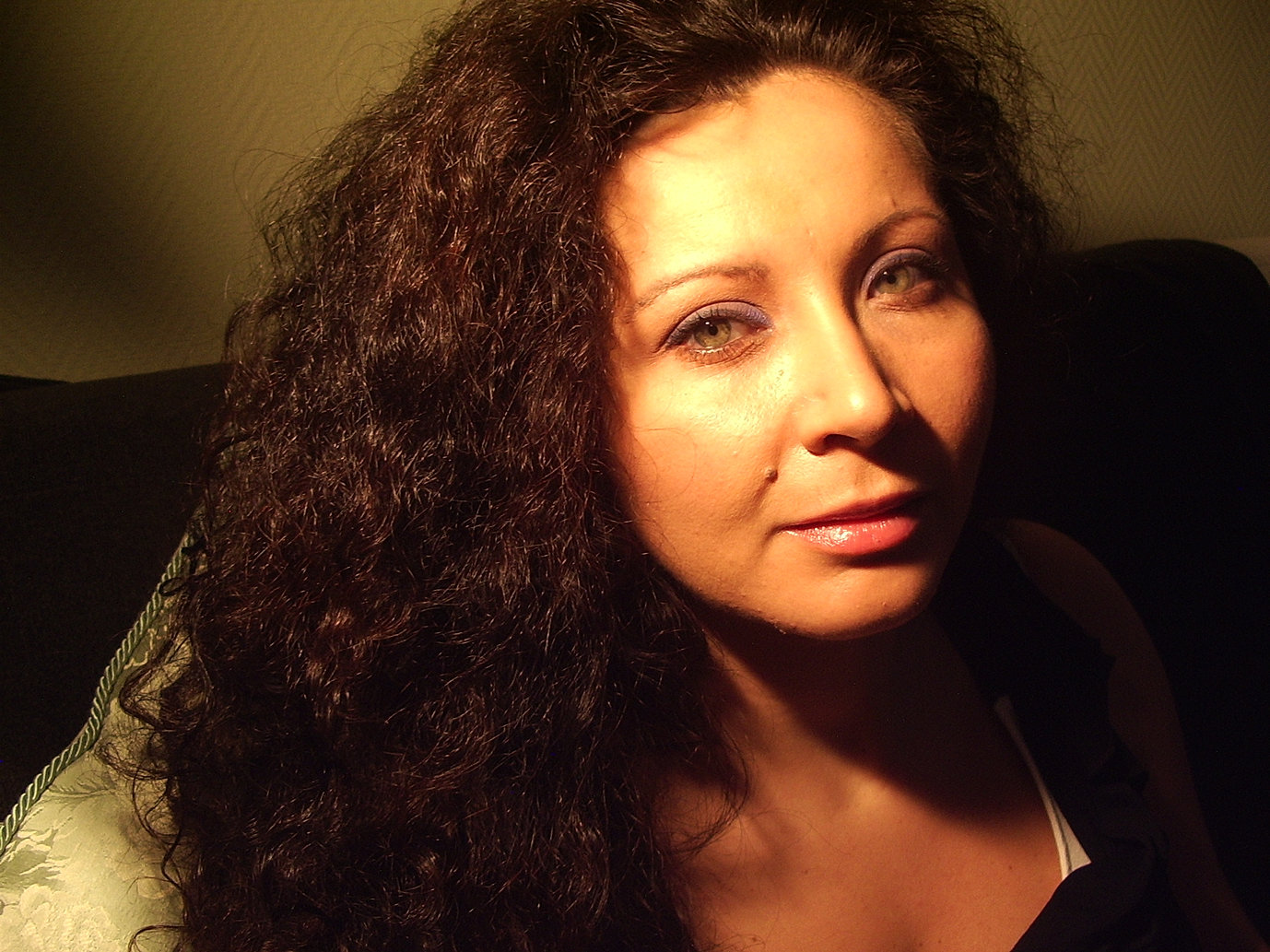
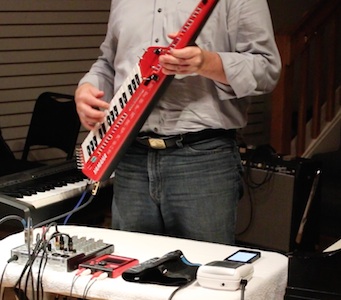 SFSOUND'S MICROFESTIVAL OF CONTEMPORARY PIANO MUSIC (II) Irene Russo, solo piano and Tom Djll's HackMIDI In conjuction with Italian Cultural Institute of San Francisco, sfSoundSalonSeries is pleased to present Italian virtuoso Irene Russo in a program of solo works for piano spanning the entire 20th century to the present: Claude Debussy (1862-1918) - Images, Book I (1905), Gian Francesco Malipiero (1882-1973) - A Debussy (1920), Tōru Takemitsu (1930-1996) - Rain Tree Sketch II (1992), Teresa Procaccini (1934) - Preludi per pianoforte op. 29 (1966), and Jörg Widmann (1973) - Hallstudie (2003). Tom Djll performs pieces from his HackMIDI project -- compositions for a digital piano using wildly out-of-range pitches, instantly shifting ambiances and attacks, long strings of repeated hammerings whose frequencies traipse into the audio range, competing melodic and rhythmic lines. PROGRAM NOTES The imaginary world of vision applied to sound include the first book of the “Images” by Claude Debussy, including Reflets dans l'eau, which is a clear example of the new tone colors Debussy discovered for the piano in this part of his life, and although he later refined this style, this piece is part of the greater achievements Debussy reached with the instrument. In 1913 the Venetian composer Gian Francesco Malipiero moved to Paris, where he became acquainted with compositions by Debussy and 7 years later composed his homage to the French composer, clearly referring to his senses by making use of non-functional harmony and ambiguous key signatures, tonality being mainly non-diatonic and usually having a sense of modality. Also the Japanese Tōru Takemitsu frequently expressed his indebtedness to Claude Debussy, referring to the French composer as his "great mentor", as well to Olivier Messiaen, clearly mentioned in his last piano composition “Rain Tree Sketch II”. Italian living composer Teresa Procaccini is one of the most famous and versatile, able to move from quite complex compositions and dramatic sketches to graceful intimate music. Her dedication to instrumental music brought her successfully on the international scene; the Preludi per pianoforte, op. 29 recall her personal characteristics that stand out especially in the incisive rhythmic vitality, dynamism and ironic nonchalance. Among the younger generation of composers Jörg Widmann seems to be the most strongly influenced by Schumann. Some works are direct homages, in others Widmann cites motives from Schumann’s music; he also often uses A minor as a Schumann allusion, like in Hallstudie. Composed in 2003 and dedicated to the Italian pianist Irene Russo, Hallstudie’s concept is the resonant body of the grand piano developed in a percussive manner – otherwise gently sounds evoke the ensemble of percussions, so that the interpreter and the instrument are merging. This will not only point out the importance of the “body” in Widmann’s works, but also demonstrate the composer’s manner of unifying the body of an instrument and an instrumentalist in most different ways. HackMIDI might perhaps be re-settled into an American experimentalist continuum that goes back to George Antheil’s pioneering work for eight pianolas Ballet Mechanique through Conlon Nancarrow’s player piano music (providing a huge pair of shoulders on which to perch my attempts) (and Trimpin — is he American?). It’s often said that Nancarrow’s music is “unplayable by any human pianist.” HackMIDI, in echt kill-the-father style, obliterates that notion with piano music that is unplayable by any physical piano. What the Keytar demands of the digital piano is nothing short of perverse: wildly out-of-range pitches, instantly shifting ambiances and attacks, long strings of repeated hammerings whose frequencies traipse into the audio range, competing melodic and rhythmic lines. The result is sounds that are impossible to achieve on any mechanical instrument yet which still refer back to some unnamed Yamaha engineer’s vision* of a perfect piano sound world— sounds which create their own unique gamut ranging from pure piano to pure electronic noise. -- T.D. * See Djll, T., “Synthesizer + Improvisation = Impossible?” (RéR Quarterly Magazine, 3/3. 1991, London: November Books: 12-15. ISSN·0954·8807) ABOUT THE MUSICIANS Praised by the legendary Martha Argerich as "one of the best young musicians I ever heard in my life", Italian pianist IRENE RUSSO (1974) appeared on the big international stages like one of the most interesting talents of her generation. In July 2008 she was the recipient of the First Prize at the Dorothy MacKenzie International Piano Award in New York. In 2000 Irene Russo won the Clara Schumann International Piano Competition in Düsseldorf, where she was particularly praised by the Jury: Joachim Kaiser ("She reminds me of a young Kempff"), Nelson Freire, Maria Tipo and Martha Argerich ("Mademoiselle Russo à toute mon admiration") among others. Ms. Russo is also Prize Winner of the 2002 ARD International Piano Competition in Munich, where she received the Special Prize for the Best Interpretation of Contemporary Music. Living composers, among which Jörg Widmann, have written works especially for her. In 2003, Irene Russo was also awarded with the Mention of Honour at the Martha Argerich International Piano Competition. Her discography includes CD's for Brilliant Classics, Edipan and Oehms Classics, DVD for WERGO as well as television recordings on: Italian RAI, ZDF, Alpha BR and CBC Canada. Her studio/live recordings are regularly broadcasted on: SWR, NDR, ARD, Bayerischer Rundfunk, Radio 3 Belgium, D-Radio Berlin, North-American KUHF, France Musique, Radio 4 Holland. Her upcoming recordings for Brilliant Classics on Prokofiev and Liszt solo works are scheduled for 2015. Passionate chamber musician, Ms. Russo has collaborated with: Jörg Widmann, Alexander Lonquich, Valerie Guillorit, Gabriele Cassone, Frank Reinecke, David Adorjan, Cristina Mantese, Alissa Margulis, Carolin Widmann, Genevieve Strosser, Zoltan Kovacs and Nadja Helble among others. Dedicated teacher, from 2008 to 2013 Irene Russo held a professorship at the Royal Music Conservatory of Antwerp. In October 2012 she was offered a professorship at the LUCA School of Arts in Leuven (Campus Lemmens Instituut) where she currently teaches. Ms. Russo is also on faculty at the Music Conservatoire of Castelfranco Veneto (Venice), where from 2010 to 2013 she was member of the Artistic Board. She's often invited to gives Master Classes and Lectures in Conservatoria and Universities in The Netherlands, Germany, Italy, Finland, Spain and Belgium. She serves regularly as jury member at various international piano competitions. TOM DJLL is a composer, improviser, and occasional writer on music. He is the recipient of a Masters degree from Mills College in Electronic Music as well as a Deeploma from the Deep Listening Organization, and was awarded the Paul Merritt Henry Prize for Composition at Mills. His projects include Mockracy, for co-operative orchestra, Grosse Abfahrt, large-group free improvisational music, and Beauty School, hardcore electronic noise. Djll appears on recordings from EMANEM, Tzadik, Creative Sources, Rastascan, and Artifact. “Djll has taken the trumpet as far beyond its silver, snarling vernacular as it is possible to go, and as far from the extended technique proponents as Bill Dixon is from Roy Castle. Djll’s trumpet extensions are in some respects no different to what early jazzmen used as punctuation devices or timbral effects. Few have gone as far as Djll, though, in making such articulations the entire substance of a piece, and none have gone so far in the development of split-channel playing.” — Brian Morton, The Wire |
|
|

sfSoundOrchestra celebrates the 50th anniversary of Terry Riley's In C. On November 2, 1964 at The San Francisco Tape Music Center, 321 Divisidero, Terry Riley essentially launched Minimalism with the premiere of In C. Performers included Jeannie Brecken, Steve Reich, Jon Gibson, Terry Riley, Warner Jepson, Stan Schaap, Sonny Lewis, Ramon Sender, James Lowe, Morton Subotnick, Tony Martin, Mel Weitzman, Pauline Oliveros, and Phil Winsor. Although this classic work is often cited for its influence on composers like Glass, Reich, and Adams, its use of open instrumentation and dynamic form determined individually during the performance is perhaps more radical, and certainly more relevant to today’s Bay Area experimental music scene. This performance is also the “App Release Party” of a new iPad app created by sfSound’s Matt Ingalls and Henry Warwick from Ryerson University (Toronto). Prof. Warwick will be present performing on the app as part of the orchestra. This extra-ordinary piece of software allows one person to play "In C", which is normally an ensemble work, as a solo performer. In this this way, and in a first of its kind performance, he will be performing as an ensemble, with an ensemble. M U S I C I A N S Cory Wright, saxophone Richard Worn, bass Henry Warwick, ipad Christina Stanley violin Meerenai Shim, flute Aram Shelton, saxophone Monica Scott, cello Larry Polansky, electric guitar Stacey Pelinka, flute Crystal Pascucci, cello Theodore Padouvas, trumpet Aaron Novik, clarinet Lisa Mezzacapa, bass Dominique Leone, keyboard Benjamin Kreith, violin John Ingle, saxophone Matt Ingalls, clarinet Diane Grubbe, flute Phillip Greenlief, saxophone Matthew Goodheart, keyboard Giacomo Fiore, guitar Mark Clifford, vibraphone Kyle Bruckmann, oboe/english horn Jacob Abela, melodica |
|
|




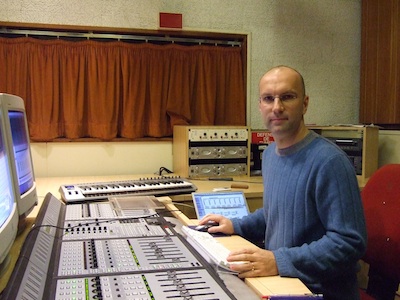
sfSound sfSound returns to Old First Concerts with an exciting program of works newly composed/revised within the last year, alongside two contrasting, rarely performed pieces from the 1960s. The concert features the west coast premiere of compositions by John Zorn, Hans Tutschku, and Christopher Burns. Rounding out the program are classics by Terry Riley, Mario Davidovsky, and a composition by sfSound's Matt Ingalls based on the music of György Ligeti that is ABSOLUTELY NOT A COPYRIGHT INFRINGEMENT. P R O G R A M John Zorn - Hexentarot (2013) Twelve simple canons for the witches' Sabbath vn, vc, pno Terry Riley - Tread on the Trail (1965) full ensemble Mario Davidovsky - Synchronisms #2 (1964) fl, cl, vn, vc, and tape Hans Tutschku - Still Air 3 (2014) oboe, bass clarinet and electronics Christopher Burns - Injunctions (2013) for five or more improvisers Matt Ingalls - György Variations (2010, revised 2014) a composition inspired by the music of György Ligeti fl, ob, cl, sx, tpt, tbn, pno, vn, vc M U S I C I A N S Monica Scott, cello Hadley McCarroll, piano/organ Andy Strain, trombone Benjamin Kreith, violin John Ingle, saxophone/conductor Matt Ingalls, clarinet/bass clarinet Diane Grubbe, flute Tom Dambly, trumpet Kyle Bruckmann, oboe/english horn/electronics |
|
|
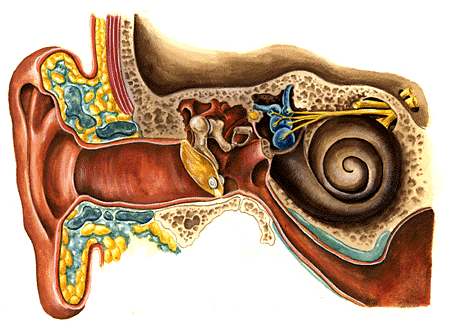
sfSound presents Tinnitus Insect Volume Knobs Bay Area Now 7's core concept is to experiment with new approaches to traditional curatorial structures that highlight collaboration within our region's cultural eco-system and which push beyond the boundaries of the performance stage towards a multidisciplinary celebration of some of the most exciting artistic voices in the Bay Area today. For this event, sfSound presents a new sonic work for amplified acoustic instruments as a continuation of their Tinnitus Insect Volume Knobs project that explores the psychoacoustic phenomena of “difference tones”. When two tones are played simultaneously, listeners can perceive an additional tone whose frequency is a sum or difference of the two frequencies. By performing only closely-tuned pitches above 1000Hz, the resulting synthesized difference tones are in a clearly lower audio range. In a reverberant space such as the Center for New Music, the acoustics only contribute to this effect. Hard to reproduce over recordings, listeners often perceive the (harmless!) difference tones as strangely originating from inside the ear. M U S I C I A N S Monica Scott, cello Benjamin Kreith, violin John Ingle, saxophone Matt Ingalls, clarinet Diane Grubbe, flute |
|
|
*** purchase advance tickets here ***

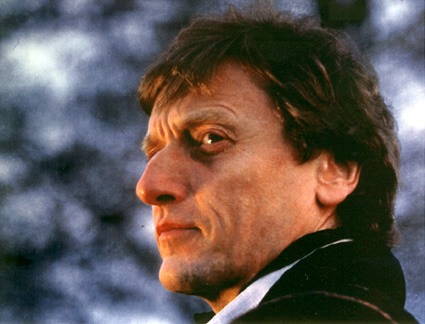
sfSound's small packages sfSound's most ambitious project of 2014, “small packages,” is a series of musical performances featuring Avant-Garde classics programmed alongside a group of new, shorter musical responses by living composers. Our previous "packages" combined established masterworks by György Ligeti, Earle Brown, and Anton Webern, alongside new contributions by Pauline Oliveros, Mark Applebaum, Greg Saunier, Dan Becker, Maggi Payne, and Canner MEFE among many others. This concert features two classic works: Karlheinz Stockhausen's Kontra-Punkte, the quintessential post-war serial masterpiece, and Gérard Grisey's atmospheric Périodes , the 2nd piece of his epic suite, Les espaces acoustiques, a touchstone of spectral music. The two seemingly opposed classic works of modern concert music are iconic examples of two main threads in modern 20th century music -- yet both are rarely performed in the United States today. To round out the program, we have commissioned five of sfSound's composer-performers to create new short works as a response - in their own unique way - to one or both of the classic compositions on the program. For each “small packages”, expect a diverse array of techniques sfSound is known for: complex notation, extended instrumental techniques, graphic notation, and improvisation. Taken as a whole, this collection of new works should be an excellent pairing to the stylistic range of the Stockhausen and Grisey "forgotten classics", all performed by one of the region’s most creative new music ensembles. An evening not to be missed! P R O G R A M Karlheinz Stockhausen - Kontra-Punkte (1953) Gérard Grisey - Périodes (1974) Monica Scott - small package (2014) John Ingle - small package (2014) Matt Ingalls - small package (2014) Christopher Burns - small package (2014) Kyle Bruckmann - small package (2014) M U S I C I A N S Richard Worn, bass Monica Scott, cello Ellen Ruth Rose, viola Theodore Padouvas, trumpet Keisuke Nakagoshi, piano Emily Laurance, harp Brendan Lai-Tong, trombone Benjamin Kreith, violin Erin Irvine, bassoon John Ingle, saxophone/conductor Matt Ingalls, clarinet Diane Grubbe, flute Kyle Bruckmann, oboe/english horn Rob Bailis, bass clarinet this concert is funded, in part by the Alice M. Ditson Fund of Columbia University, San Francisco Grants for the Arts, and individual contributions. |
|
|

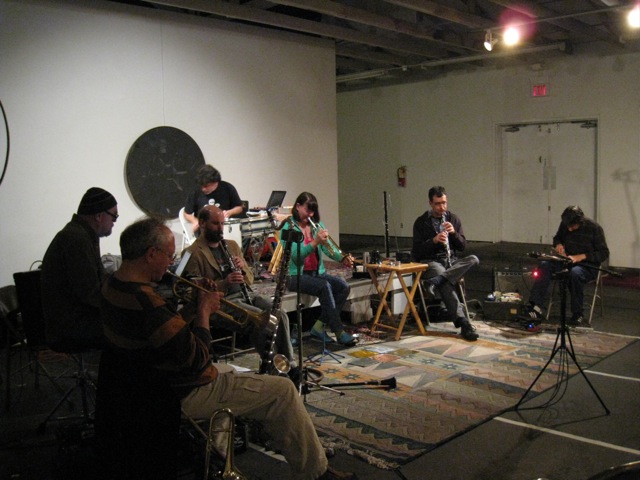
Birgit Ulher mit Grosse Abfahrt German trumpet improviser, Birgit Ulher, performs solo and group improvisations with Grosse Abfahrt — a San Francisco freely-improvising music continuum/community whose name means “great departure”. From out this departure of de-parts comes a salute to epic failure, a disaster in full-dress uniform, gold epaulets dangling off the corpse of Western culture. M U S I C I A N S Birgit Ulher, trumpet John Shiurba, guitar Gino Robair, percussion/electronics Tim Perkis, electronics Kanoko Nishi, koto/piano Bill Hsu, video Jacob Felix Heule, percussion Tom Djll, trumpet/electronics Kyle Bruckmann, oboe/english horn Born 1961 in Nuremberg, Birgit Ulher studied the visual arts, which still have an important influence on her music. Since moving to Hamburg in 1982 she has been involved in free improvisation and experimental music. Since then she has “established a distinguished grammar of sounds beyond the open trumpet” (jazzdimensions.de). She works mainly on extending the sounding possiblities of the trumpet by using splitting sounds, multiphonics and granular sounds and has developed her own extended techniques and preparations for producing these sounds. Besides this material research she is especially interested in the relation between sound and silence. She performs solo, with dancers, working ensembles, and one-time collaborations with musicians from around the world. She has been organising the festival of improvised music Real Time Music Meetingfor over ten years. Music performances in Europe, USA, South America, Russia and the Middle East, together with UNSK (Birgit Ulher / Martin Küchen / Lise-Lott Norelius / Raymond Strid), the Trio PUT (with Ulrich Phillipp and Roger Turner), Nordzucker (with Lars Scherzberg and Michael Maierhof), Heiner Metzger, Martin Klapper, Tim Hodgkinson, Dorothea Schürch, Rhodri Davies, Robyn Schulkowsky, John Edwards, Michael Zerang, Damon Smith, Lou Mallozzi, Gino Robair, Ute Wassermann, Albert Márkos, Sven Ake Johansson, Gene Coleman, Ernesto Rodrigues, Heddy Boubaker, Tim Perkis, Bryan Eubanks, Tanaka, Ariel Shibolet, Christoph Schiller and Sean Meehan, Forbes Graham, Leonel Kaplan, Gregory Büttner, Lucio Capece, Eric Leonardson and Bill Hsu. Lecture/Workshops at Haifa University, SAIC - School of The Art Institut of Chicago and Hochschule für Musik Basel. Grosse Abfahrt is a project Tom Djll started to explore a number of problems in freely improvised music. The first and most obvious of these is the problem of ensemble size, which Djll wanted to tackle head-on: GA ensembles are always of eight to ten players. This range seems to settle in a locale where there is a strong opportunity for individual sound-agents to emerge and make a statement against the ensemble backdrop, and also for the entire ensemble to cohere into long-form structures that transcend the productions of conventional improvised-music sociality (another problem addressed). How these ensembles are collected takes up another problem: that of the conflict between fluency and comfort among improvising compadres. Fluency between players’ languages and approaches is desirable, of course; however, it can lead to complacency. Grosse Abfahrt is made up of a core group of five-six players which, ideally, does not vary: Tom Djll, Tim Perkis, Matt Ingalls, John Shiurba, Kyle Bruckmann and Gino Robair. These people are all very familiar with each other’s strengths, preferences, and foibles. Added to this core are “outsider" musicians who have not played with the core. Often, these outsiders come from far away, and are playing as duos or trios already, so they arrive with some comfort and fluency in their own musical relationship. How these two dynamics come together to create music, with practically no introduction (much less, rehearsal), is Grosse Abfahrt's practice. This will be the core group's second meeting with Birgit Ulher, who is based in Hamburg, Germany; it's our first with locals Bill Hsu, Kanoko Nishi-Smith, and Jacob Felix Heule. Birgit Ulher's appearance is made possible by The Goethe Institut 
|
|
|

Jonathan Zorn Jonathan Zorn presents compositions for voice and electronics. Language as Dust, an essayistic sound poem exploring the consequences of electronic mediation within spoken and written language. The text of the piece freely repurposes sources relating to the history of vocal technologies as well as psychoanalytic and philosophical theories of the voice, including: Aristotle's De Anima, Thomas Edison's anticipated use of audio recording, abstracted lyrics of "How High the Moon," misheard vocoder communications, and transcriptions of Electronic Voice Phenomena. And Perforation, features Sigmund Freud’s essay “The Uncanny” rewritten using Google Translate and Word‘s Auto Summarize function. Logically, the resulting texts are spoken through a vocoder. Jonathan Zorn works as a composer, performer, and curator of experimental, electronic, and improvised music. His electronic music pairs improvising musicians with interactive computer systems to create hybrid, human-machine ensembles. Zorn's interest in vocal utterance has resulted in a series of pieces in which spoken language is interrupted by electronic forces, drawing attention to the gap between speech and sound. Zorn has been active as an improvisor on bass and electronics for 15 years and has performed at Red Cat, the Walker Art Center, the Verona Jazz Festival, the Library of Congress, the Seattle Festival of Improvised Music, Line Space Line Festival, and the Chelsea Art Museum. His work has been published in Ord und Bild, the SEAMUS Journal, Notations 21, and UbuWeb. |
|
|
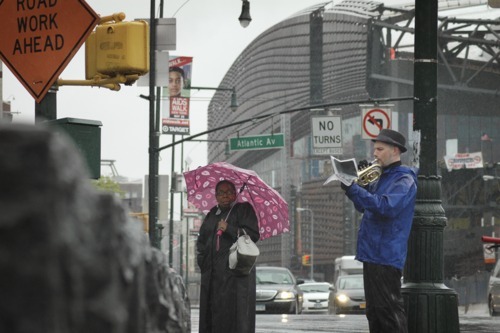
An evening of Experimental Music and Film Annie Lewandowski and Tim Feeney with films by Michael Ashkin & Craig Shepard, Larry Polansky, and David Kant with a film by Beth O'Brien Finding a shared interest in works of abandonment and stasis, improvisers Tim Feeney (percussion) and Annie Lewandowski (piano/electronics) began a collaboration with artist Michael Ashkin in Ithaca, NY in 2011. Often performed as short videos with live improvised soundtracks, their work Depot/Centralia/Tiber was released on DVD in 2013. In the DVD liner notes, Jonathan Skinner writes: "Like the accompanying music, the indeterminate rhythm of these videos, enflamed via minimalist stillness, emerges in conjunction with clouds, insects, birds plants… The drone of Lewandowski's and Feeney's musical collaboration, the drum of the earth itself, offers a surface taught with myriad events." Depot/Centralia/Tiber has been performed and screened in Ithaca, New York, and Oberlin. On a West Coast tour, video artist Beth O'Brien composer/trumpeter Craig Shepard present On Foot: Brooklyn (recently released on Edition Wandelweiser Records). Shepard walked 780-miles in 91 days in New York City, walking everywhere he went. Each week, he composed a new piece and wrote it down. Each Sunday, he led a silent, cell-phone free walk to a different location in Brooklyn, performed the piece, and walked back. O'Brien documented the walks. This performance features a video of animated still photography by O'Brien together with a live performance of two pieces composed on the trek with Shepard, Larry Polansky, and David Kant. Michael Ashkin's work spans various media, including sculpture, installation, photography, video, poetry, and text. His work addresses issues of landscape, architecture, and urbanism, specifically the intersection of subjectivity with the social, economic, and political production of space. After receiving a BA from the University of Pennsylvania and an MA from Columbia University in Middle East Languages and Cultures, he worked in the business world for eight years before choosing to become an artist. He received an MFA from The School of the Art Institute of Chicago in 1993. Since then he has shown extensively nationally and internationally including the Whitney Biennial (1997), Greater New York (2000), Documenta 11 (2002), and Vienna Secesion (2009). He has been awarded two Pollock-Krasner Fellowships (1997, 2012) and a Guggenheim Fellowship (2009). He is currently Chair of the Department of Art at Cornell University. Tim Feeney has performed as an improviser with musicians including cellist/electronic musician Vic Rawlings; the percussion trio Meridian, with Nick Hennies and Greg Stuart; pianist Annie Lewandowski; tape-deck manipulator Howard Stelzer; trumpeter Nate Wooley; sound artists Jed Speare and Ernst Karel; saxophonist Jack Wright; and the trio ONDA. As an interpreter, Tim was a founding member of the quartet So Percussion, the duo Non Zero with saxophonist Brian Sacawa, and the ensemble LotUs. He has toured throughout the United States, including notable performances at Boston’s Institute of Contemporary Art, New York's The Stone, the Center for New Music and Audio Technology at UC-Berkeley, the Stanford Art Museum, Mills College, Princeton University, and Oberlin College. He has recorded for labels including Accidie, Full Spectrum, Sedimental, Soul on Rice, Audiobot, Homophoni, and Brassland/Talitres. Tim is currently Assistant Professor of Percussion at the University of Alabama. Annie Lewandowski is a composer, improviser, and multi-instrumentalist whose work has situated her between the worlds of improvisation and independent rock music. As an improviser on the piano and accordion, she has recorded with Fred Frith, the London Improvisers Orchestra, Caroline Kraabel, Tim Feeney, and Doublends Vert, and performed with improvisers including Theresa Wong, Miya Masaoka, Chris Cutler, Evan Parker, Ellen Fullman, CAGE, and Charles Hayward. Lewandowski and percussionist Tim Feeney have an ongoing project improvising to the short videos of artist Michael Ashkin. As a singer, guitarist, and keyboardist, Lewandowski has recorded with rock bands Emma Zunz, Xiu Xiu, The Curtains, Former Ghosts, William Ryan Fritch, and Hawnay Troof. Her band powerdove has released five recordings: Live at the Maybeck House (self-released, 2010), a self-titled EP (Circle into Square, 2011), Be Mine (Circle into Square, 2011), Do You Burn? (Circle into Square/ Murailles Music/ Africantape, 2013), and Arrest (Murailles Music/Sickroom, 2014/2015). Lewandowski has performed at festivals and venues across the United States and Europe, including the Casa da Música (Porto, Portugal), the Hippodrome (London), Musica Nelle Valli (San Martin Spino, Italy), the Great American Music Hall (San Francisco), the Frieze Arts Fair (London), Avalon (Los Angeles), and Redcat (Los Angeles). Lewandowski is a lecturer in music at Cornell University. Beth O'Brien is a photographer, filmmaker and visual artist living in Brooklyn, NY. Craig Shepard (1975 in New Haven, Connecticut, USA) is a composer, trombonist and sound artist. He is a member of the Wandelweiser Composers Ensemble. His work has been called "touchingly beautiful" (Wolfgang Fuhrmann, Berliner Zeitung) and "truly invulnerable" (Martin Preisser, St-Galler Tagblatt). It has been featured at Moments Musicaux Aarau, the Akademie der Künste Berlin, the Kunstraum Düsseldorf, Experimental Intermedia New York, Real Art Ways in Hartford, the Deep Listening Center in Kingston, New York, and throughout Europe and the United States. His most successful work is On Foot, a 31-day, 350-mile trek from Geneva to St. Margrethen, Switzerland on which he composed, wrote down and performed a new piece every day. As a trombonist, he has performed with Christian Wolff, the Merce Cunningham Dance Company, Jürg Frey, Collegium Novum Zürich and many others. He has played on recordings with the Vokal Ensemble München and with Burkhard Schlothauer. At the Zürcher Hochschule der Künste (Zurich University of the Arts), Mr. Shepard served as a lecturer and listening researcher. A paper detailing the results of his work has been published in the Schweizerische Musikzeitung. From 2001 to 2005, he studied sacbut with Ulrich Eichenberger. In 1998, he graduated with a Bachelor of Music, magna cum laude, from Northwestern University, where he studied trombone with Frank Crisafulli and composition with Michael Pisaro and Alan Stout. Craig Shepard lives in Brooklyn, New York City. Larry Polansky (b. 1954) is a composer, theorist, teacher, writer, performer, programmer, editor and publisher. He lives in Santa Cruz, California, teaching at UC Santa Cruz. He is also the Emeritus Strauss Professor of Music at Dartmouth College, and co-director and co-founder of Frog Peak Music. His five solo CDs are available on New World Records, Artifact, and Cold Blue, and his music is widely anthologized on many other labels. His own works are performed frequently around the world. From 1980-90 he worked at the Mills Center for Contemporary Music, where he was one of the co-authors (with Phil Burk and David Rosenboom) of the computer music language HMSL, and a contributor to the widely-used program SoundHack (by Tom Erbe). |
|
|

Nate Wooley and Carol Robinson premiere new works by Eliane Radigue and Denis Doufour As part of a nationwide tour that offers a rare opportunity to hear new French works played by the cutting edge performers they were made for, clarinetist Carol Robinson and trumpeter Nate Wooley will give American and world premiere performances of new works by iconoclastic French composers Eliane Radigue and Denis Dufour. The program opens with Dufour’s fascinating Cinq forms d’appel for bass clarinet and trumpet, and continues with Radigue’s OCCAM XVI for solo bass clarinet, OCCAM X for solo trumpet, and OCCAM River III, an amazingly beautiful duet for trumpet and birbynė (the keyless Lithuanian folk clarinet). The Occam pieces are part of a substantial set of new works composed in conjunction with a small group of the world’s finest contemporary musical voices. Eliane Radigue is renowned for her electronic music, in particular, with the ARP Synthesizer. Her compositions are defined by micro-events due to subtle overtone shifts that dance above a seemingly static tone. The result is profoundly moving. In 2005, Radigue began composing for acoustic instruments, first Naldjorlak, her grand trio for two basset horns and cello, now the ever-expanding Occam Ocean series. These new works have been featured in important festivals: Festival d’Automne / Paris, Huddersfield Contemporary, Angelica / Bologna, CTM.12 Spectral / Berlin, Crossing the Line / NY, Sound and Music / London, ISEA2010 Ruhr, E-May / Vienna, [K] HEUTE / Hamburg, and Impact / Utrecht. Denis Doufour, highly respected for his research in the fields of instrumental and electronic creation, is the author of more than 160 works. As one of the pioneers of the “morphological” and expressive approach to sonic writing, his works employ a vast spectrum of parameters in all sonic dimensions. Franco-American clarinetist Carol Robinson is known for her eclectic approach to performing, composing and improvising. Equally at ease in the classical and experimental realms, she appears in festivals, concert halls, and alternative spaces the world over. Her recordings of Feldman, Nono, Berio, Scelsi, Niblock, and of her own compositions, are widely acclaimed. One of Eliane Radigue’s most virtuosic and consistent collaborators, she has premiered Naldjorlak and numerous pieces from Occam Ocean. New York based trumpeter Nate Wooley has performed on over 100 recordings. Increasingly acknowledged internationally, Wooley’s specific style is part of a burgeoning revolution in experimental trumpet technique with the likes of improvisers Evan Parker, John Zorn, Anthony Braxton, and Thurston Moore. His own compositions expand conceptions of linguistic based embouchure manipulation and utilize the trumpet to control amplified feedback.  Robinson/Wooly Tour funded with support from The French-American Fund for Contemporary Music Robinson/Wooly Tour funded with support from The French-American Fund for Contemporary Music
|
|
|
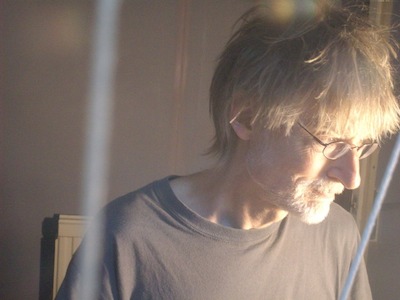
Tim Hodgkinson Visiting from the UK, clarinetist and lap steel guitarist Tim Hodgkinson performs solo and in a duo with local pianist Chris Brown. Increasingly lauded as a composer, with works featured at international contemporary music festivals, and two sets of pieces for ensemble out on the Mode label, Tim Hodgkinson has an equally powerful commitment to intense and highly energised performance practice. In over forty years' work he has placed himself in a series of definitive projects, whether as co-conspirator in the seminal Henry Cow group, as saxophonist with influential avant metal band God, or as bass clarinet soloist in the spectral compositions of Iancu Dumitrescu. His lap steel guitar playing remains completely uncategorisable, bringing subdued and not so subdued echoes of rock musics and other ethnicities. Tim Hodgkinson (b. 1949) studied social anthropology at Cambridge, where he met Fred Frith in 1968. Together they initiated what became the politically and musically radical group HENRY COW. This was the band in which he began to write music and explore sound. Following the demise of the Cow in 1978, he threw himself into various experimental rock projects, notably THE WORK. As an improviser his centre of gravity shifted from alto saxophone and keyboards towards clarinets and lap steel guitar. In the early 90’s he found his own way to fuse distinct kinds of musical experience and began writing scored pieces that drew directly on acoustic experimentation and improvisation. The first of (what turned out to be) many trips to Siberia rekindled his interest in anthropology, and research into music and shamanism led him towards new ways of ‘grounding music in being’. As an improvising musician on reeds and lap steel guitar, he has performed all over the world with many of the most acclaimed artists in the field, and continues to be fully engaged in the celebrated KONK PACK trio with Roger Turner and Thomas Lehn. In 2009 he released Klarnt - a CD of solo clarinet improvisations. Other continuing projects include an international quartet with Denman Maroney, Paul Lytton and Dominic Lash, and the UK-based ZINK trio with Hannah Marshall and Paul May. Mark Medwin wrote about his Klarnt CD: Many of these eleven untitled vignettes are fairly brief, packing myriad gestures into each moment. Even on the longer pieces, such as the final track, each second seems ready to burst with ideas. Dynamics have little to do with impact, as many moments of the most concentrated energy hang barely above a whisper. Instead, there is a sense of heightened emotion as Hodgkinson plums every register and mood of which the clarinet is capable. With Ken Hyder from Scotland, and Gendos Chamzyryn from Tuva, he works in the K-SPACE project, named after the Soviet cosmologist Nikolai Kozyrev. With numerous tours of Europe and Siberia, K-Space's CD releases include Infinity, a set of recordings that breaks new ground by using customised software to re-compose the music with each listening, creating an experience intended to parallel that of shamanic flight. In 2009, K-Space developed a sound-installation for the exhibition Shamans of Siberia at the Museum of Ethnology in Stuttgart. In 2015, they will perform a new collaborative project with the Bergersen String Quartet at Huddersfield Contemporary Music Festival. As both bass clarinetist and composer and conductor, Hodgkinson has participated in many concerts of spectral music with Iancu Dumitrescu's HYPERION ENSEMBLE. His own compositions have been interpreted in such international festivals as: Spectrum XXI (Brussels, Paris, Geneva, Berlin, London), Huddersfield Contemporary Music Festival (U.K.) where he was a featured composer in 2007, Craiova and Ploiesti Festivals (Romania), Guarda Festival (Portugal), Cantiere Internazionale d’Arte di Montepulciano (Italy), Konfrontationen Festival (Austria), Nordlyd Festival (Norway), Musique Action (France) and the European Symposium of Experimental Music at Barcelona. His Piece for Harp and Cello was selected for the SPNM shortlist in 2005. His composition SHHH was accepted for the IMEB electroacoustic music archive at Bourges in 2006. His piece Fragor appeared in the Martin Scorsese film Shutter Island in 2010. He has worked with Hyperion Ensemble, Talea Ensemble, Ne(X)tworks, the Bergersen String Quartet, The London Sinfonietta, Insomnio Ensemble, Phoenix Ensemble, Basler Schlagzeug Trio, Nidaros Slagverkensemble, and the Bindou Ensemble. His newest piece Azim will be performed at Ilan Volkov’s Tectonics Festival in Israel in October 2014. As a writer, he has published articles on improvised music, musique concrète (he interviewed Pierre Schaeffer in 1986), spectralism, the boundary between shamanism and art in southern Siberia, and aesthetic responses to the impact of new technology on contemporary music - in, amongst others, Perspectives of New Music, Arcana, Contemporary Music Review, Musicworks, The Wire, Cambridge Anthropology, Variant, RER Quarterly, and Resonance Magazine. He has given lectures, workshops and seminars at Cagliari and Lyon Conservatoires, at the Institute of Contemporary Art, at Goldsmiths College and the School of Oriental and African Studies in London, at Istanbul, Edinburgh and Cornell Universities, and art schools in several European countries, at COMA summer school, and at the Verband für Aktuelle Musik in Hamburg where he was artist in residence in 2010. Chris Brown, composer, pianist, and electronic musician, creates music for acoustic instruments with interactive electronics, for computer networks, and for improvising ensembles. Collaboration and improvisation are consistent themes in his work, as well as the invention and performance of new electronic instruments. These range from electro-acoustic instruments ("Gazamba", 1982), to acoustic instrument transformation systems ("Lava", 1992), and audience interactive FM radio installations ("Transmissions", 2004, with Guillermo Galindo). As a performer he has recorded music by Henry Cowell, Luc Ferrari, José Maceda, John Zorn, David Rosenboom, Larry Ochs, Glenn Spearman, and Wadada Leo Smith; as an improvisor he has recorded with Anthony Braxton, Pauline Oliveros, Fred Frith, Rova Saxophone Quartet, Ikue Mori, Alvin Curran, William Winant, Biggi Vinkeloe, Don Robinson, and Frank Gratkowski, among many others. Recent recordings of his music include "ROGUE WAVE" (on Tzadik), "TALKING DRUM" (on Pogus), a duet with Fred Frith titled "CUTTER HEADS" (on Intakt), and "SUSPENSION", with the CBD Trio, on Rastascan. He is also a member of the pioneering computer network band "The Hub", which has just released"BOUNDARY LAYER"a box set recording celebrating over 20 years of music on Tzadik. He is also a Professor of Music and Co-Director of the Center for Contemporary Music (CCM) at Mills College in Oakland, California. |
|
|
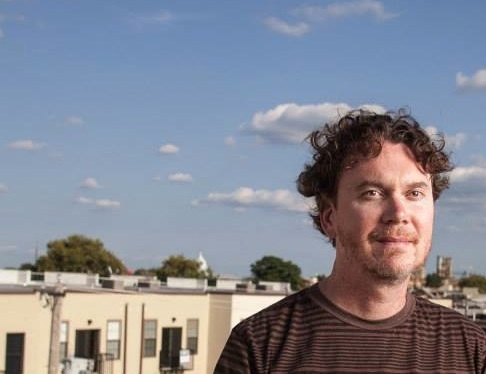
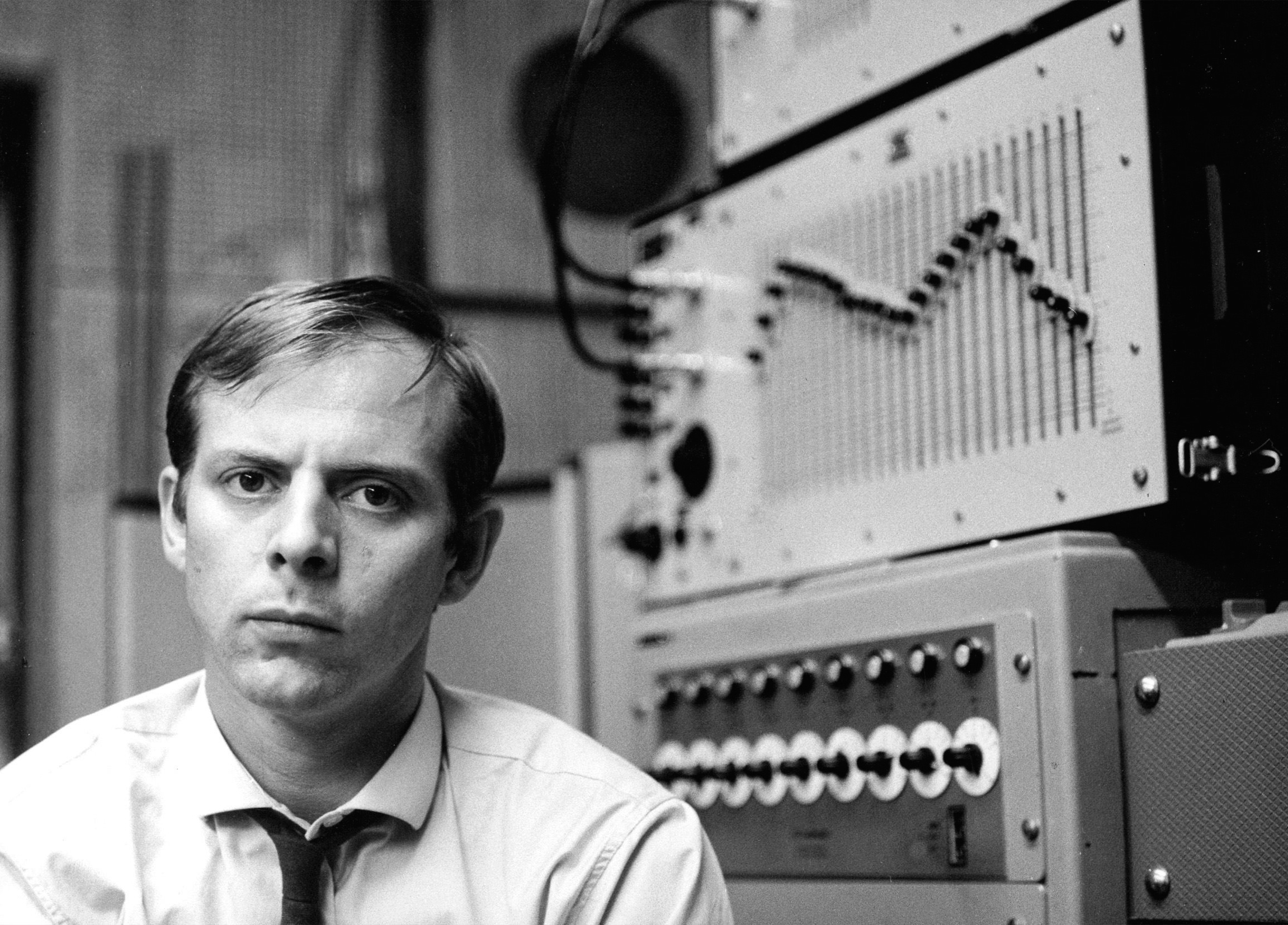
A concert of quadraphonic compositions by Bhob Rainey/Chris Cooper & Karlheinz Stockhausen PROGRAM Karlheinz Stockhausen - Gesang der Jünglinge (1956) Bhob Rainey/Chris Cooper - Axon Ladder (2014) Axon Ladder is a quadrophonic piece developed by Chris Cooper (Angst Hase Pfeffer Nase, Fat Worm of Error, etc.) and Bhob Rainey (Nmperign, The BSC) over the past two years. The composers embraced their love for sci-fi / horror, utilizing utopian and dystopian genre concepts as generative material – namely, machine learning and artificial life. The striking poetic qualities of these algorithmic techniques in operation reveal music that is teeming with activity – complex, dense, playful, terrifying. Axon Ladder is a highly immersive experience with immense energy and emotional content that somehow manages to remain a non-spectacle. Philadelphia-based Rainey will be present to perform a live diffusion of the full piece. Karlheinz Stockhausen's Gesang der Jünglinge ("Song of the Youths") (1955-56) is one of the first masterpieces of electronic music. The work seamlessly integrates electronic sounds with vocal recordings of 12-year-old Josef Protschka by means of matching voice resonances with pitch and creating sounds of phonemes electronically. In this way, for the first time ever it successfully brought together the two opposing worlds of the purely electronically generated German elektronische Musik and the French Musique Concrète, which transforms recordings of acoustical events. Gesang der Jünglinge is also noted for its early use of spatiality; it was originally in five-channel sound, which was later reduced to just four channels (mixed to monaural and later to stereo for commercial recording release). Bhob Rainey is an award-winning composer / performer. He has a long and well-regarded history as an improviser, known for a masterful yet often understated technique that transforms the soprano saxophone into an electronic-like, textural, or percussive device. He is also known for his ongoing critique of improvisational practice, which has brought influential concepts and stylistic components into the practice as a whole. While Rainey has worked with numerous improvisers globally, he is best known for his solo work, Nmperign (with trumpeter Greg Kelley), and his direction of the improvising large ensemble, The BSC. Rainey's work extends to the realm of electronic and algorithmic composition. A programmer from a young age, he has contributed a significant set of extensions to the SuperCollider language and has used contemporary computational techniques from fields like gaming and big data to trouble the formal content of his electronic works. His collaborations in this area are not only with algorithms and electrons, but also with regarded composers such as Ralf Wehowsky, Jason Lescalleet, and Chris Cooper. In 2013, Rainey was awarded the prestigious Pew Fellowship in the Arts for his work in these areas. In 2014, the American Composers Forum (Philadephia Chapter) awarded him a Subito grant for work on Axon Ladder. Chris Cooper has worked around the Bay Area with "industrial bluegrass" oddballs Caroliner and adventurous indie-popsters Deerhoof. When the financially strapped Caroliner went on hiatus in the late '90s, Cooper struck out on his own, adopting the Angst Hase Pfeffer Nase alias for his experiments with prepared guitar and tape collage. The first Angst Hase Pfeffer Nase album, the obscurely titled Beatings With Gimpy Flighted Wings Entrapped by Post-Fence of Garish Land, appeared circa 2000 on the small Menlo Park label. A 7" release, "Myth of the Golden Jackal & the Frog," followed on Birdman. Cooper subsequently recorded under his own name for Kissy Records, and performed with Barn Owl and the Massachusetts-based Fat Worm of Error. Karlheinz Stockhausen emerged early on as one of the most influential and unique voices in the post-WWII European musical avant-garde and his prominence continued throughout the rest of the twentieth century and into the twenty first. Combining a keen sensitivity to the acoustical realities and possibilities of sound, rigorous and sophisticated compositional methods expanded from integral serialism, innovative theatricality, and a penchant for the mystical, Stockhausen remains one of the most innovative musical personalities to span the turn of this century. |
musicians | history |
sponsors | contact
Copyright © 2014 sfSoundSeries. All rights reserved.